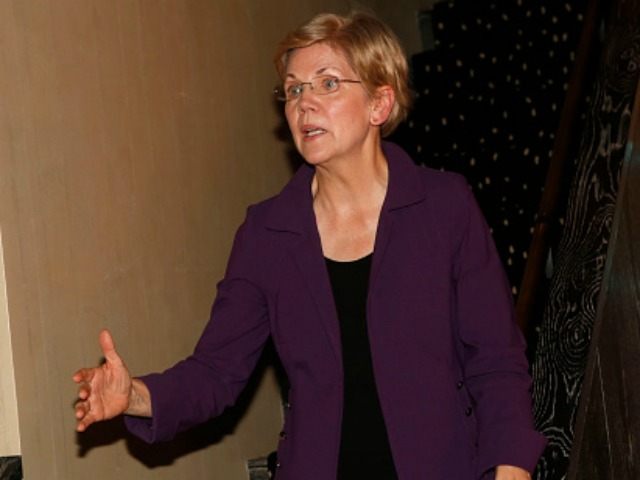A funny thing happened on the way to the last Republican presidential debate and it impacted events during and after the debate, as well. You’ve probably heard about it … but until now didn’t realize what was happening as it played out right before your eyes.
Such is the world of issue advocacy and messaging in and around politics in Washington, D.C.
Do you remember this Tweet from Senator Elizabeth Warren?
So… Can we talk about that ad that just ran during the #GOPDebate where I look like a Commie dictator?
— Elizabeth Warren (@elizabethforma) November 11, 2015
Or how about this one from presumptive Democrat presidential nominee Hillary Clinton?
The @CFPB protects borrowers from unfair and deceptive Wall Street practices. Attacks against it are unfounded and outrageous.
— Hillary Clinton (@HillaryClinton) November 11, 2015
In fact, the ad Warren mentioned was so effective – add in a comment from Carly Fiorina for good measure – and the socialist-leaning Senator from Massachusetts evidently felt so threatened she even Tweeted, again. Mind you, except perhaps for the mention of the Consumer Financial Protection Bureau (CFPB) by Fiorina, this didn’t happen by accident and Warren has good reason to worry about the future of her latest big government, nanny state endeavor.
So here’s my message to Wall Street & their GOP buddies: we’re ready to fight back to protect the @CFPB. #GOPDebate
— Elizabeth Warren (@elizabethforma) November 11, 2015
Here is Carly invoking the CFPB during the acutal debate.
And here is the short pre-tested American Action Network (AAN) ad that started it all. The ad – including the use of Warren’s image – was based upon polling carried out in September.
The polling presented AAN with a clear path to take with their messaging to take on the latest non-transparent Washington power grab known as Elizabeth Warren’s pet project, CFPB.
Without given any information, voters are largely split on their overall view of the CFPB with 24% saying they have a favorable opinion of the organization, 25% saying they have an unfavorable opinion and another 35% saying they have no opinion one way or the other. However, when voters are presented with some facts about the CFPB, support for the bureau quickly erodes, most notably among Independents and Republicans.
The key points to keep in mind are these:
- CFPB is largely unknown, representing a clear opportunity to define the rogue agency to voters before they define themselves.
- 54% say consumers should be free to choose the financial services that work for them (in contrast to CFPB’s work to choose for them).
- The messages of how CFPB negatively impacts hard-working Americans were most effective in building opposition to CFPB (this theme was reflected in our ad)
- Elizabeth Warren, who designed and established the CFPB, is an accurate and effective personification of the agency (so we used her on a red banner in the ad)
So, why oppose the CFPB?
In short, who do you want deciding when and if you can take out a loan, or make a purchase on credit – you, or some less than transparent government agency going through your credit history without your knowledge? Here is just one example of what the CFPB is up to. From The Hill on the 16th.
The main problem with the CFPB’s policy is that, while well intentioned, it will reduce competition and raise credit costs, thereby hurting the very consumers it is trying to help. According to a Wall Street Journal analysis, a recent CFPB settlement could cost some customers $586 in higher credit costs. By eliminating discounts, everyone would be put at risk of paying more by eliminating this competitive force from the marketplace.
Equally troubling is that the CFPB initiated this policy behind closed doors, without any transparency or input from the public. For more than a year, the CFPB would not even release the methodology backing up its policy despite repeated bipartisan requests from members of Congress. And, once disclosed, its methodology was thoroughly discredited in a major peer review study.
This week the House will consider a bill (H.R. 1737), that would rescind the CFPB’s flawed auto finance “guidance,” and require transparency and public participation before issuing new guidance. The bill also directs the CFPB to study the consumer impact of eliminating a car buyer’s ability to get a discount in the showroom. The CFPB has admitted to Congress that it failed to undertake this fundamental analysis before issuing the flawed guidance.
Most importantly, there’s a better way to ensure fair credit while keeping credit affordable and accessible.
However you weigh in on the broader issue of the CFPB, it’s impossible to characterize the American Action Network’s recent CFPB-related effort in and around the last GOP debate as anything other than a tremendous success.
It not only got people talking; it got both a key Senator and the Democrats’ likely 2016 nominee Tweeting – plus tons of online viewers for the original 30 second ad. In terms of elevating an issue through messaging, that’s not just a home run – it’s a grand slam.

COMMENTS
Please let us know if you're having issues with commenting.